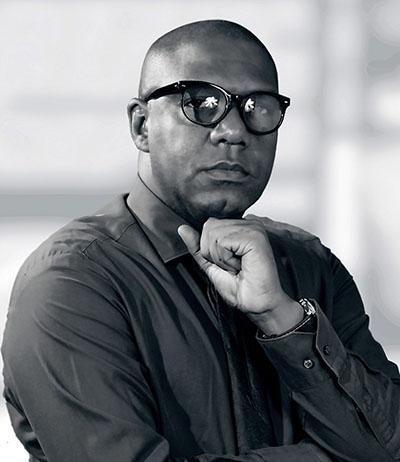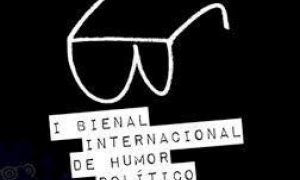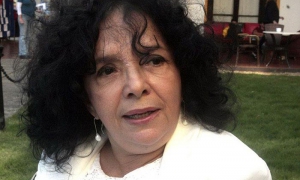
JESÚS Lara Sotelo’s work is diverse and unique. The multifaceted artist who moves boldly across different areas of visuals arts - painting, ceramics, sculpture, and photography - has taken on literature and passes with ease on to audiovisuals, where he unites all strands of the arts.
Given his tireless drive to create and the fact that for him, it’s the forms that change, and not what he wants to express, Lara (Havana, 1972) has been able branch out across various artistic expressions.
A self-taught artist, Lara already has a long history of personal expositions, including Sugestiones inhibidoras de las apariencias I (Pennsylvania, USA);De la Utopía al Réquiem II (Carmen Montilla Gallery Plaza de San Francisco de Asís, Havana); In Vitro I (La Acacia Gallery, Havana); Make Bacon. Exposición de abstracción retrospectiva (Convento de San Francisco de Asís, Havana), and Odas en Azul Prusiano. Homenaje a la Prima ballerina absoluta Alicia Alonso (Amelia Peláez Gallery, Hotel Habana Libre).
His rebellious spirit, always in search of new horizons, has also led him to poetry which, just like his visual art, features different aesthetics and tonalities. He began in 1994 with the a collection of un-released poems called Paradojas: capítulo al éxtasis, followed by the publication of ¿Quién eres tú, God de Magod?; Alicia y las odas prusianas elección de la fe; Domos Magicvs and Mitología del Extremo, a book of aphorisms.
Lara returns to the pages of this publication following the presentation (September 16) of his latest poetry anthology Lebensraum (Colección Sur) in the Union of Writers and Artists of Cuba’s Caracol Hall.
His new book, a bilingual work (Spanish-English) with a unique tone, where the reader will frequently encounter singular poetic prose, described by the man who wrote the prologue, author Francisco López Sacha, as a “general parable on the meaning of our lives, the concise and tight writing of almost all the concerns of a thinker, of a complex artist who needs a lot of living space to express himself.”
Hence the title Lebensraum meaning“living space” in German. Although the term inevitably refers to the expansionist aims of Hitler’s Germany, its use in this context in connected to human beings’ need for their own space; a kind of protective place against the world.
In the over 100-page book, readers will discover poems addressing the author’s main concerns, grouped for example, in sections entitled Strange Halves; Routines; Turmoil; Gender Violence; The Tragedy of Questions.
Meanwhile, the interactive multi-media creation Monólogo bipolar, also in bilingual format, was presented. The piece, which offers art critics, philologists and researchers the opportunity to become better acquainted withLara Sotelo’s work, includes interviews with figures such as Alicia Alonso; Eusebio Leal; Pablo Armando Fernández; Marilyn Bobesan; as well as an image gallery.
Havana City historian, Eusebio Leal for example, places the anthology in the context of Cuban contemporary art, noting, “Lara’s work is a continual process of self-discovery. He has realized this idea of Marti, that his works embody what he sees, his visions, and this work is very unique, very sensitive, it’s so close to this strange spirituality of the Cuban people, that it has made him of one of the artists of the vanguard and men of contemporanity in Cuba.”
The soundtrack to Monólogo bipolar carries the seal of maestro Frank Fernández, National Prize for Music winner, who created compositions based on Lara’s poems, entitled Espacio vital.
In 2010, when Lara inaugurated his monumental exposition Make bacon which overtook the entire second floor gallery of the Basílica Menor del Convento de San Francisco de Asís, in Old Havana, I asked him to summarize his work, to which he responded:
“I always look to break molds. Give free reign to creation, to my imagination. I give myself the freedom to choose how and when I want to create; with complete responsibility but always trying to change myself. It’s not often that I find myself sitting down, bored. I need to work, to exploit my abilities to the full.
National Prize for Literature winner, César López described Jesús Lara Sotelo as “a believer from his island, moving from canvas, card, wood, metal, soft sculpture and vivid ceramics to verse and music, perhaps this is all a never-ending journey…






